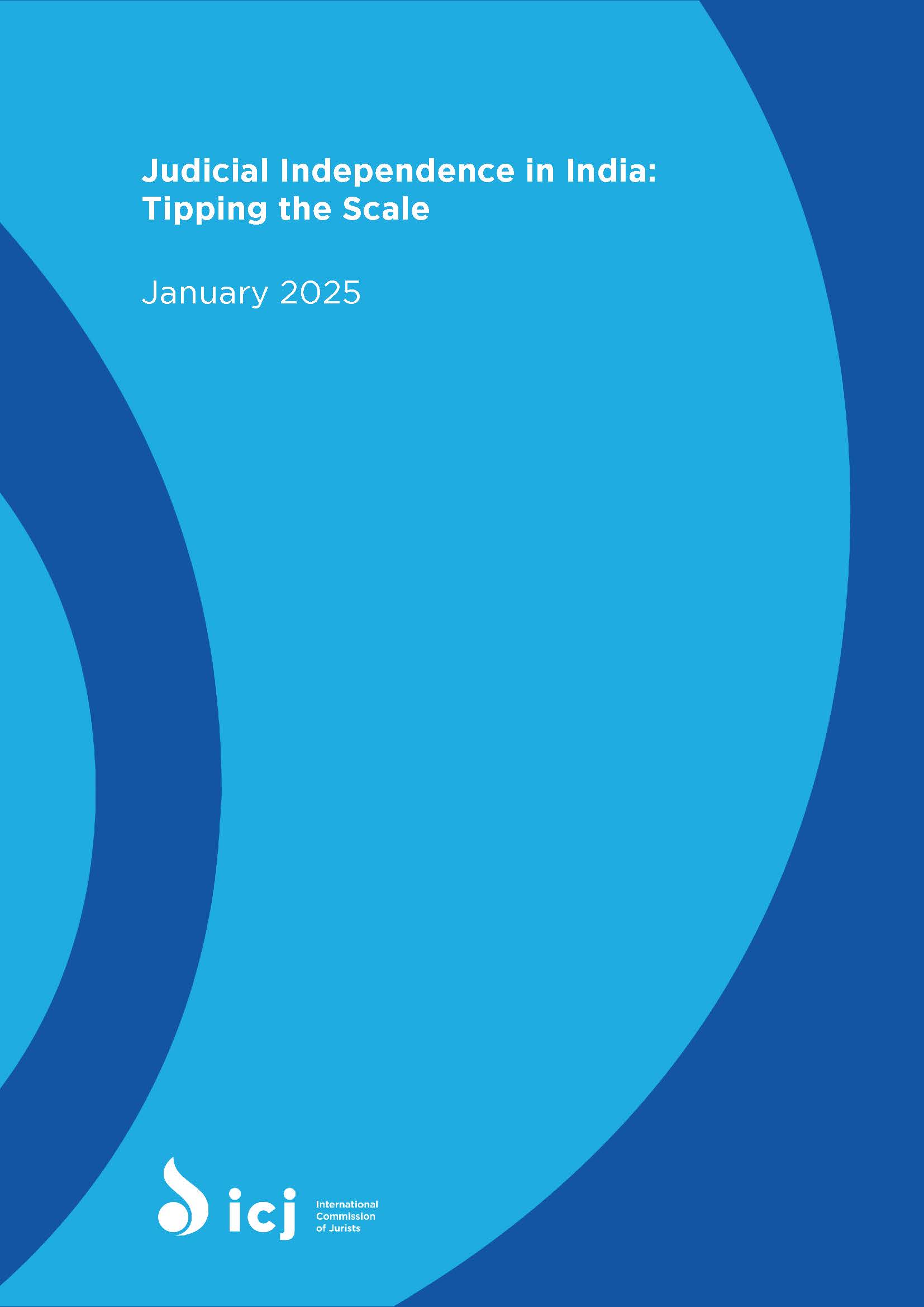The independence of the judiciary in India is under heavy strain due to structural deficiencies in judicial governance, irregularities in judicial appointments, and improper interference and influence by political actors, concludes the International Commission of Jurists in a report published today.
This retrogression comes during a time of significant erosion in the rule of law and human rights protection, especially for minorities and other persons from marginalized groups.
The report, Judicial Independence in India: Tipping the scales, highlights the erosion of judicial independence in India, applying critical indicators based on international law and standards on the rule of law and the independence of the judiciary. These include: the selection and appointment of judges; transfer of judges; judicial accountability mechanisms; post retirement employment of judges and judicial administration pertaining to listing and allocation of cases in the Supreme Court.
“While India has a well-deserved reputation, historically, for maintaining a strong and independent judiciary on the whole, the conditions needed for judicial independence and the fair and effective administration of justice have been fracturing.” said Ian Seiderman, Senior Legal and Policy Director of the ICJ.
“Without quick corrective action on the part of judicial, legislative and executive authorities, in accordance with international law and standards, the credibility of the judiciary as a bulwark against injustice and authoritarianism will be further eroded”, added Seiderman.
While the Constitution provides for judicial independence and the separation of powers between the judiciary, executive and legislature, the ICJ has identified numerous deficiencies in legislation and administrative law and judicial practice that must be urgently addressed to uphold this constitutional mandate.
Key findings:
- Lack of a clear and transparent procedure of selection and of objective and predetermined criteria based on competence, merit, ability, experience and integrity. There is therefore an absence of adequate safeguards against selection for improper means and motive.
- The appointment process gives the government an effective veto power on recommendations made by the Collegium, allowing the executive a determinative role in the composition of the higher judiciary.
- The transfer of judges does not require consent of the concerned judge. Transfers proceed on vague and overbroad criteria, such as ‘public interest’ and ‘better administration of justice’ without clear explanation. This allows arbitrariness, often making it impossible to distinguish between transfers being used as disguised sanction, transfers intended to be punitive or retaliatory and transfers for the better administration of justice and public interest.
- The power to initiate removal or impeachment proceedings is vested with Parliament, which is inconsistent with international law principles according to which the power of removal should be vested with an independent body composed of a majority of judges and not with either the legislature or executive.
- Other than impeachment, judicial accountability mechanisms in India are insular and ineffective, making real accountability near impossible. The ‘In-House Procedure’ developed by the Supreme Court to inquire into complaints against judges is not provided for in statutory law. It is not based on any articulated rules or norms of judicial conduct that serve as a substantive basis to determine misconduct.
- The practice of post-retirement employment of judges, particularly when the appointment is carried out at the discretion of the government, casts a shadow of perception of bias on the concerned judge while at the same time allowing for indirect executive influence over the judge while in office.
- Internal administration pertaining to listing and allocation of cases in the Supreme Court, while based on predetermined rules and procedures, are also subject to the discretionary power of the Chief Justice of India. Instances of irregular listing and allocation, presumably at the discretion of the Chief Justice, have given rise to seemingly arbitrary exercise of power by the Chief Justice, at times in a manner that suits the government.
Key recommendations include:
- Ensure that the selection, appointment, and the transfer of judges are carried out by a statutory body, such as a judicial council, on the basis of objective, predetermined criteria consistent with international law and standards.
- Adopt a code of judicial conduct and establish a statutory mechanism to address complaints against Judges to ensure a system of judicial accountability that is insulated from the executive.
- Introduce measures to regulate the post-retirement employment of judges so as to safeguard the judiciary from practices inconsistent with judicial independence and executive discretion.
- Take measures to remove arbitrariness in internal administration of justice, specifically the listing and allocation of cases in the Supreme Court and High courts.
Download
The full report can be downloaded here (PDF).





